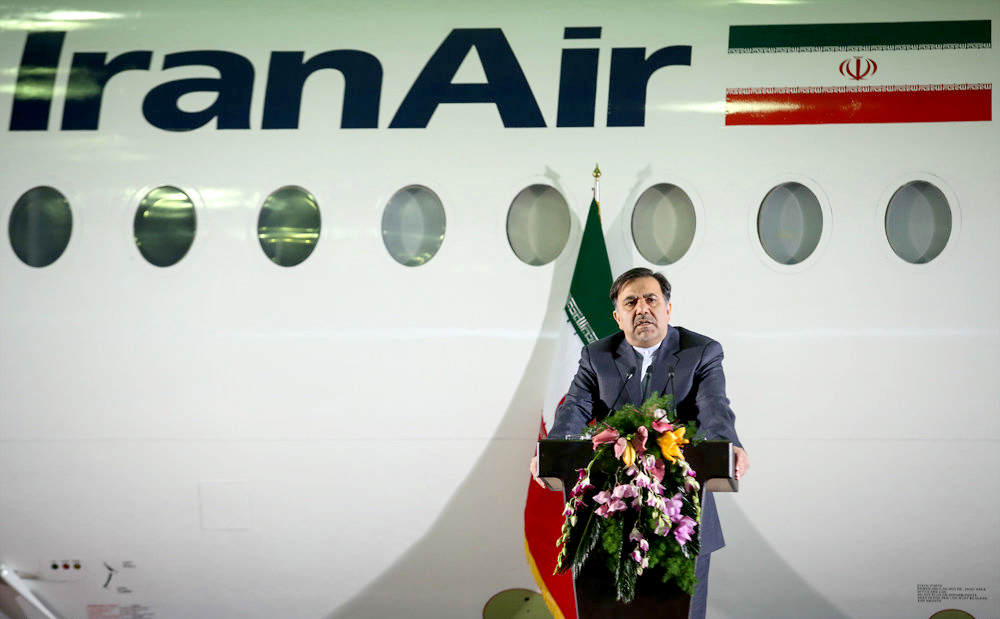Iran is planning to offer shares of flag carrier Iran Air in international stock markets, the minister of roads and urban development announced.
“The airline should be privatized in foreign stock exchanges,” IRNA also quoted Abbas Akhoundi as saying during a ceremony held on the occasion of the 55th anniversary of Iran Air’s establishment, in Tehran on Wednesday.
Earlier, Iran Air Chief Executive Officer Farhad Parvaresh was quoted as saying by Bloomberg that the airline would be listed on Tehran Stock Exchange, though it must be in a “suitable condition” first. He, however, did not mention a schedule.
The minister said the airline plans to reach international standards through enhanced management and training.
The lifting of western nuclear sanctions against Iran on January 16, as part of a July accord between Tehran and world powers, has paved the way for Iranian airlines to reconnect with the world aviation industry, improve their standards and have access to new planes, spares and technologies.
Iran Air recently signed deals for acquiring 118 passenger planes from French aircraft manufacturer Airbus and another 20 from French-Italian short-haul planemaker ATR.
The Airbus accord covers 45 single-aisle planes consisting of 21 from the current generation of A320 family and 24 re-engined A320neos. There are also 73 wide-body aircraft, such as 27 A330s, 18 A330neos and 16 of Airbus’s latest A350s, plus 12 A380s.
Akhoundi said with the new purchases, Iran Air’s fleet capacity will see an increase of 1.5 times in passenger seats.
Flight Route Expansion
Iran Air, which currently serves 27 domestic and 29 international routes and its aging fleet numbers about 40 planes, including Boeing 747s, A320s and discontinued A300s, A310s and Fokker NV 100s, is looking to add routes to international markets.
The carrier is preparing to restart flights to Japan. The carrier will initially restart flights connecting Tokyo’s Narita airport with Tehran, with a stop in Beijing, once a week. The earliest that Iran Air is likely to resume service is said to be next year after ending flights in 2012.
Iran and Japan are also discussing allowing direct flights between the countries for multiple airlines and will come to an agreement on this soon. Japan Airlines Company stopped direct flights to Tehran in 1980 following the Islamic Revolution the previous year.
Russia and Iran airlines have also reached an agreement designating an unlimited number of carriers on specified routes. Based on the agreement, the airlines will be able to operate a maximum of 28 frequencies per week with any aircraft type. The deal was adjusted by the countries in September 2015 and recently disclosed by Russian authorities.
The two countries have agreed that Tehran, Isfahan, Mashhad and Rasht will be points of destinations for scheduled services in Iran; three more points will be specified later. Points of destinations in Russia will be Moscow, St. Petersburg, Astrakhan, Kazan, Ufa and Sochi; one more destination will be added later.
European airlines are also readying to restart flights to Iran, with British Airways saying it will resume service to Tehran in July.
Iran Air in its Heyday
In late 1970s, Iran Air—otherwise known as Homa company—used to be an unrivaled airline in the Middle East in terms of profitability and the second safest airline in the world.
It was launched in 1961, following a merger between Iranian Airways—founded by private investors in the 40s—and Persian Air Services.
As of 1979, Homa, like other Iranian airlines, was blockaded by international sanctions, and was driven to the verge of bankruptcy.
Other major Middle Eastern airlines, namely those of Turkey and the UAE, took advantage of the region’s strategic location and flourished.
“Between 2011 and 2014, Iranians paid $12 billion for air tickets to international airlines,” Akhoundi said, adding that many international airlines use Iran’s air routes while Iran receives a meager share from those flights.
In 2012, Iran Air piled up debts amounting to 180 billion rials ($52 billion at market exchange rate), which dropped to 120 billion rials ($34.8 billion) in 2013 when President Hassan Rouhani took office.
“Homa should regain its stature,” Rouhani said in an address at the Wednesday ceremony.
“We should reemerge as an aviation power in both passenger and freight transport,” he said, adding that the government is planning to once again take advantage of Iran’s geopolitical position.
Regional Air Travel Hub
President Rouhani said Iran is the shortest pathway between the east and the west and that Tehran could become an air travel hub.
Akhoundi referred to the launch of the first development phase of Imam Khomeini International Airport on Tuesday as the first step toward turning Tehran into a regional hub.
The grand project is aimed at upgrading IKIA to a free trade zone and the surrounding area to an airport city and a logistic park that is designated as an industrial center to support activities related to trade and air cargo.
At a ceremony marking the successful completion of the project’s first phase, Akhoundi noted that IKIA Special Economic Zone is not going to become a hub of imports and industrial activities, “rather it will be seen as a platform for exports and transportation”.
The IKIA airport city project includes a 1,500-hectare free trade zone and a 2,500-hectare special economic zone in a 13,700-hectare area.
An airport city or aerotropolis is an urban plan in which the layout, infrastructure and economy are centered on an airport.
The plan stipulates that an airport can do more than extending traditional aeronautical services through new non-aeronautical commercial facilities, services and revenue streams.


